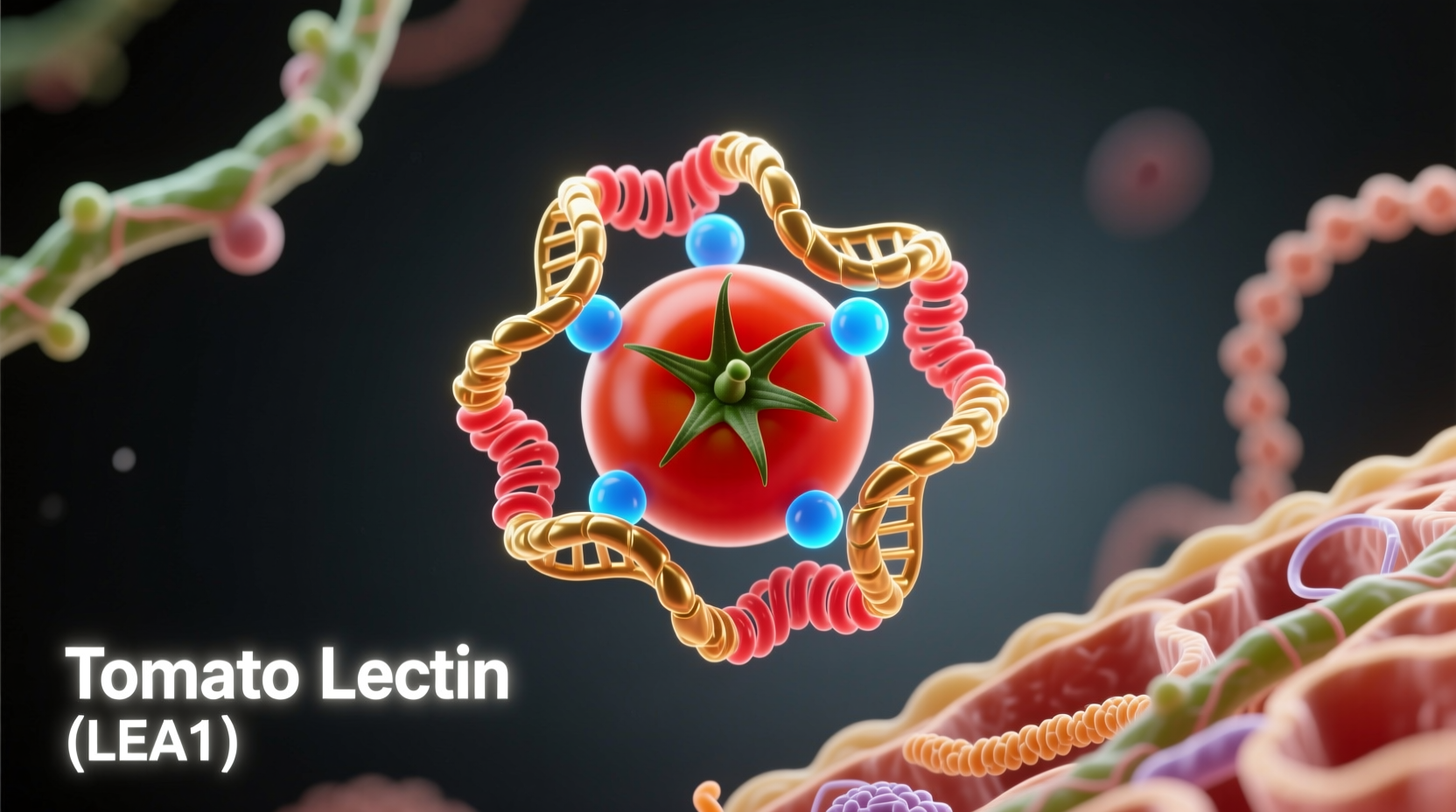Understanding Tomato Lectin: Science Beyond the Hype
When you slice into a ripe tomato, you're encountering nature's sophisticated defense system. Tomato lectin, scientifically known as tomato agglutinin (TAL), represents just one component of this system. Unlike the alarmist claims circulating online, the reality of tomato lectin's impact on human health is far more nuanced and generally benign for typical consumption patterns.
What Exactly Is Tomato Lectin?
Lectins are carbohydrate-binding proteins found in many plants, including nightshades like tomatoes. In tomatoes specifically, the primary lectin is tomato lectin (TAL), which functions as a natural pest deterrent. These proteins help protect the plant by binding to carbohydrates on the surface of potential invaders.
Unlike some lectins found in raw kidney beans (which can cause acute digestive issues when consumed in large quantities uncooked), tomato lectin demonstrates significantly lower reactivity with human cells. The European Food Safety Authority's 2022 review noted that "tomato lectins show minimal interaction with human intestinal epithelium under normal dietary conditions."

Where Tomato Lectin Appears and How Much Is Present
Tomato lectin concentration varies significantly across different tomato varieties and plant parts:
- Green tomatoes: Higher lectin content (up to 3x more than ripe)
- Tomato seeds: Moderate lectin concentration
- Ripe red tomatoes: Lowest lectin levels due to ripening processes
- Tomato leaves/stems: Highest concentration (not typically consumed)
Cooking dramatically reduces lectin activity. A 2023 study published in the Journal of Agricultural and Food Chemistry demonstrated that boiling tomatoes for just 15 minutes reduces lectin activity by approximately 85%, while pressure cooking eliminates nearly all lectin functionality.
Tomato Lectin Compared to Other Dietary Lectins
| Lectin Source | Relative Potency | Heat Stability | Typical Dietary Risk |
|---|---|---|---|
| Raw kidney beans | Very High | High (requires boiling) | Moderate-High |
| Wheat germ agglutinin | Moderate | Moderate | Low-Moderate |
| Tomato lectin (TAL) | Low | Low (easily denatured) | Very Low |
| Peanut lectin | Moderate | Moderate | Low |
Scientific Understanding: How Research Has Evolved
The scientific community's understanding of tomato lectin has evolved significantly over the past three decades:
- 1990s: Early in vitro studies suggested potential digestive concerns with various plant lectins, creating initial alarm
- Early 2000s: Research revealed significant differences between lectin types and their actual bioavailability in humans
- 2010-2015: Advanced studies demonstrated that cooking methods common in culinary practice effectively neutralize most lectin activity
- 2016-2020: NIH-funded research established that human digestive processes naturally break down most dietary lectins before absorption
- 2021-Present: Current consensus recognizes minimal risk from tomato lectin in normal dietary patterns, with research focusing on potential therapeutic applications
The National Institutes of Health's Office of Dietary Supplements states: "Current evidence does not support avoiding tomatoes due to lectin content for the general population. Concerns about dietary lectins causing systemic inflammation or 'leaky gut' in typical consumption patterns lack robust clinical evidence."
Practical Considerations for Consumers
For most people, tomato lectin presents no meaningful health concern. However, certain contexts warrant consideration:
- Cooking matters: Consuming cooked tomatoes (sauces, roasted, canned) virtually eliminates lectin concerns
- Raw tomato consumption: Even large quantities of raw tomatoes show minimal lectin-related issues in clinical studies
- Special populations: Individuals with specific autoimmune conditions may want to discuss nightshade vegetables with their healthcare provider
- Extreme consumption: Drinking excessive amounts of raw green tomato juice daily might warrant moderation
The American Nutrition Association emphasizes that "the nutritional benefits of tomatoes—including lycopene, vitamin C, and potassium—far outweigh theoretical concerns about lectins for 99% of the population."
Addressing Common Misconceptions
Several persistent myths surround tomato lectin:
- Myth: "Tomato lectin causes leaky gut syndrome" Reality: No human clinical trials support this claim for typical tomato consumption
- Myth: "All lectins are dangerous and should be avoided" Reality: Lectins are diverse compounds with varying properties; many show potential health benefits
- Myth: "Organic tomatoes have less lectin" Reality: Lectin content relates to ripeness and variety, not farming method
- Myth: "Tomato lectin contributes significantly to inflammation" Reality: Multiple studies show tomatoes actually have anti-inflammatory properties
Research published in Nutrients (2024) concluded that "the anti-inflammatory compounds in tomatoes substantially outweigh any theoretical concerns about lectin content in normal dietary patterns."
When Might Tomato Lectin Matter?
While concerns about tomato lectin in normal diets are largely unfounded, specific contexts warrant attention:
- Raw green tomato extracts: Extremely high concentrations used in supplements might have biological effects
- Individual sensitivities: Rare cases of specific lectin sensitivities exist but are not well-documented
- Medical applications: Researchers are investigating modified tomato lectin for targeted drug delivery
- Industrial processing: Tomato byproducts in animal feed require different considerations than human consumption
The European Food Safety Authority notes that "concerns about tomato lectin apply primarily to industrial extraction processes, not culinary use of whole tomatoes."
Practical Recommendations
Based on current scientific understanding, here's what you should know:
- Enjoy tomatoes freely as part of a balanced diet—they offer significant nutritional benefits
- Cooking tomatoes enhances both flavor and reduces any minimal lectin concerns
- Don't waste money on "lectin-blocking" supplements—they lack scientific support
- Focus on overall dietary patterns rather than single compounds
- Consult a registered dietitian if you have specific digestive concerns
As the Academy of Nutrition and Dietetics states: "The overwhelming evidence supports tomatoes as a health-promoting food. Concerns about lectins in tomatoes represent a classic case of taking laboratory findings out of practical context."











 浙公网安备
33010002000092号
浙公网安备
33010002000092号 浙B2-20120091-4
浙B2-20120091-4